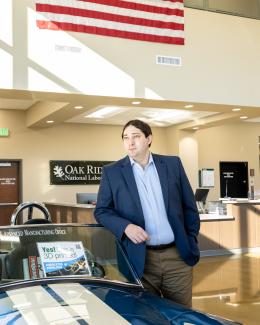Using additive manufacturing, scientists experimenting with tungsten at Oak Ridge National Laboratory hope to unlock new potential of the high-performance heat-transferring material used to protect components from the plasma inside a fusion reactor. Fusion requires hydrogen isotopes to reach millions of degrees. Tungsten, the metal with the highest melting point, holds promise to withstand extreme temperatures at the edge of this reaction, yet it is brittle and difficult to machine. The ORNL team is using an additive manufacturing technique called electron beam melting to build innovative tungsten fusion components with complex, unique geometries that can’t be made through traditional manufacturing. “The electron beam allows us to better control the heat distribution as tungsten is printed layer by layer,” said ORNL’s Betsy Ellis who led the initial experiments. “After more testing, this method may result in a better quality, full-density structure that’s less prone to cracking.”
Media Contact






